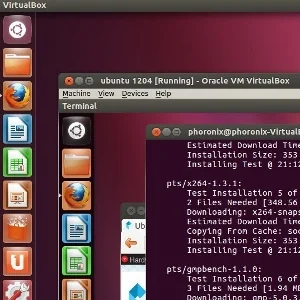Xen 4.0.0 Released For Improved Virtualization

New features for Xen 4.0.0 include performance improvements, better scalability, blktap2 for VHD image / snapshots / cloning support, improved IOMMU PCI pass-through for Intel VT-d and AMD IOMMU systems, VGA primary graphics card pass-through support to an HVM guest for high performance graphics using direct access to the graphics card, memory page sharing and page-to-disc for HVM guests, Netchannel2 for improved networking, online resize of guest disks without reboot/shutdown, para-virtual high-performance USB pass-through to both PV and HVM guests, and many other new features and changes.
Xen 4.0.0 supports up to 128 virtual CPUs per guest, up to 1TB of RAM per host, and 128 physical CPU cores per host for a default compilation. The Xen graphics card pass-through support requires a system with Intel VT-d for IOMMU support (the AMD IOMMU support for this functionality is not currently working well) and has primarily been tested using Intel graphics. Some AMD and NVIDIA graphics cards can be passed to Xen guests too, but require additional Xen patches to work. More on the Xen VGA pass-through support can be found on this Wiki page. There's also a video demonstration of this new Xen 4 feature in this blog post.
On this Wiki page provides the release notes for the Xen 4.0.0 features and changes along with installation instructions.
2 Comments

